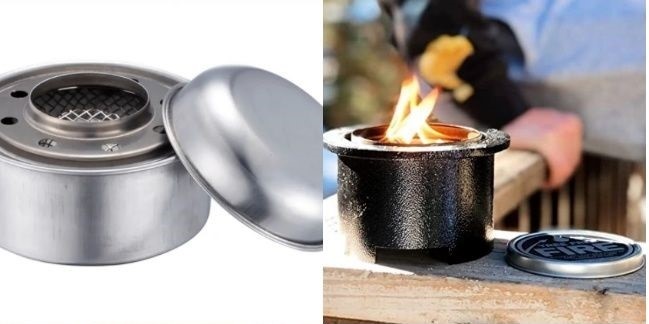Recently, many sellers of portable stove products reported that their products were taken off the shelves or received a warning email from Amazon. They required to upload relevant safety inspection reports before they could put relevant products on the shelves.
Portable stoves covered by this policy:
This policy is applicable to portable decorative light sources that use alcohol based fuel to generate suspended flame in open cup cans. This kind of commodity is generally composed of a pot or base, usually made of ceramics or other heat-resistant materials. It can also be called portable fire basin, portable fireplace, stove, fire bowl, courtyard stove, fire basin, flame lamp or table stove.

According to Amazon's policy, all portable stoves should be tested and meet the standard requirements of ASTM f3363-19 (Standard Specification for portable non vent devices burning liquid or gel fuels).
Note: The test report must include a picture of the inspected goods, and the picture should be sufficient to prove that the inspected goods are the same as the goods published on the details page.
Range:
1.1 These requirements apply to the following equipment:
1.1.1 Fuel and maintain flame in open reservoir surface;
1.1.2 The flame can be maintained without additional external ventilation to release combustion exhaust gas;
1.1.3 burning liquid fuel, gel fuel (such as solid alcohol) or other non solid fuels in openable liquid reservoirs or disposable and non refillable fuel containers;
1.1.4 The fuel capacity shall not exceed 2.5 liters (0.67 gallons);
1.1.5 The output power is 1.47 kW (5000 BTU/h) or less;
1.1.6 Easy to carry or move manually;
1.1.7 It is applicable to indoor, outdoor or both.
1.2 These requirements do not apply to the following equipment:
1.2.1 Candles;
1.2.2 For cooking or heating food;
1.2.3 Burning solid fuel, as determined by the test method described in Test Method D4359; or
1.2.4 Outdoor garden lamp/desk lamp without open storage, such as oil lamp that can renew oil, and outdoor garden lamp/desk lamp that uses fuel with lamp wick (see Appendix X1).
1.3 This specification specifies the minimum safety requirements for equipment to help ensure a reasonable degree of safety in normal use, so as to improve personal safety and reduce fire, death and injury.
1.4 This specification is not intended to replace other safety measures, such as adult supervision, close monitoring of products during use, and fire detection, alarm or extinguishing systems.
1.5 Values expressed in SI units shall be regarded as standard values. The values in parentheses are explanatory or approximate information.
1.6 This specification is used to measure and describe the reaction of materials, products or components to heat, flame and external forces under controlled conditions, but it does not include all factors required for fire hazard or fire risk assessment of materials, products or components under actual fire conditions.
1.7 This standard is not intended to address all safety issues, if any, associated with its use. It is the responsibility of the user of this standard to establish appropriate safety, health and environmental practices and determine the applicability of regulatory restrictions prior to use.
1.8 This International Standard is formulated in accordance with the internationally recognized standardization principles established in the Decision on Principles for the Development of International Standards, Guidelines and Recommendations issued by the Technical Barriers to Trade (TBT) Committee of the World Trade Organization.
2. References
2.1 ASTM Standards:
D3828 Small Closed Cup Tester Flash Point Test Method
D4359 Test Method for Determining whether a Material is a Liquid or a Solid
E136 Test Method for Combustibility of Materials Using a Vertical Tube Furnace at 750 ° C
Test process
1. Test application form;
2. Relevant samples and data;
3. Laboratory tests;
4. Issue test report
Information required
1. 2-3 test samples;
2. Product instructions;
3. Product BOM
Generally speaking, the test cycle takes about 1-2 weeks, and the specific time needs to be analyzed according to the specific product.